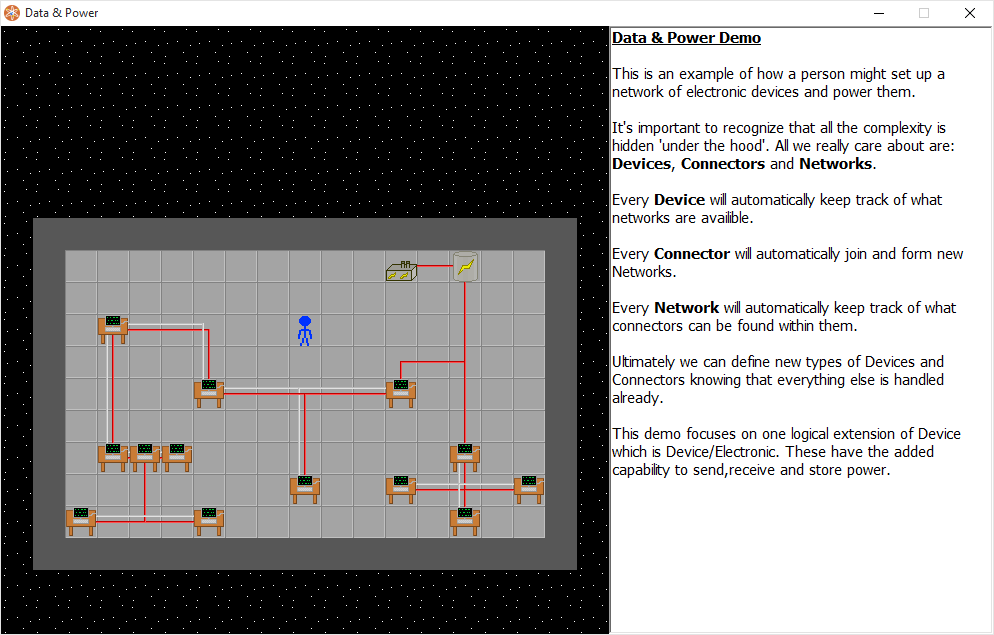To download this demo for your Linux/Mac installation, enter this on your command line:
DreamDownload byond://RedHallDev.DataPower##version=4
Emulator users, in the BYOND pager go to File | Open Location and enter this URL:
byond://RedHallDev.DataPower##version=4
50 downloads
Version 1
| Date added: | Jul 13 2015 |
| Last updated: | Aug 24 2015 |
3 fans
|
Data & Power
'A demonstration of how to create dynamic electrical networks.'
Using this demo you'll see how to place wires, computers, power storage units and power generators.
This is an Advanced level demo. I'm assuming people who wish to use it are competent in reading and writing BYOND code.
I encourage all users to have a look though. Further documentation inside.
The Core Network Features
The core network should almost never need to be edited but understanding it from a high level will be useful. It contains definitions for:
Connectors
These are physical joining objects like wires or pipes.
Devices
These are your computers, tanks, generators, microwaves.
Connector_Networks
These are abstract objects that don't physically exist. They exist only in the background and keep track of what Connectors(wires,cables,joinings) are currently acting as a group.
The Electrical Extension
Building onto what we understand about the network we can make some logical extensions.
Electrical Devices
These have all the built in behaviour of a network Device, only these have additional functionality. Notably they can send/receive/store and they have a life cycle.
Example Life Cycles:
Microwave: consume power until it no longer exists.
Power Generator: generate power for all Devices on the network until it no longer exists.
Storage Unit: share all power it has whenever available until it no longer exists.
Wires & Ethernet Connectors
We can make an extension to Connector where we introduce new types of Connectors called Wire and Ethernet.
All Connector_Networks keep track of what type of Connector they are comprised on. Stored in ConnectorType. Thus we can differentiate what networks are handling power and what networks allow for data transmission.
|
|
Copyright © 2025 BYOND Software.
All rights reserved.

